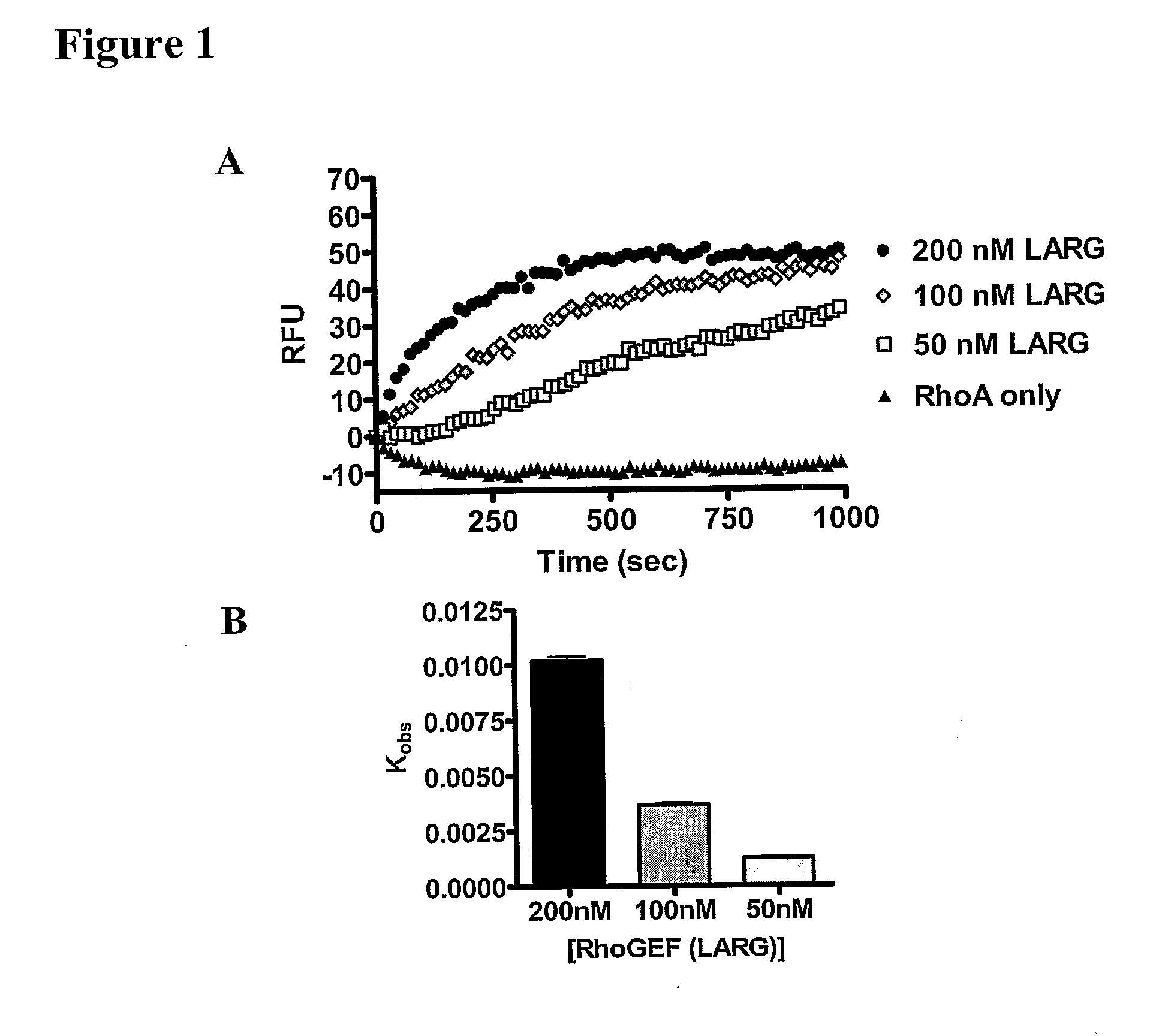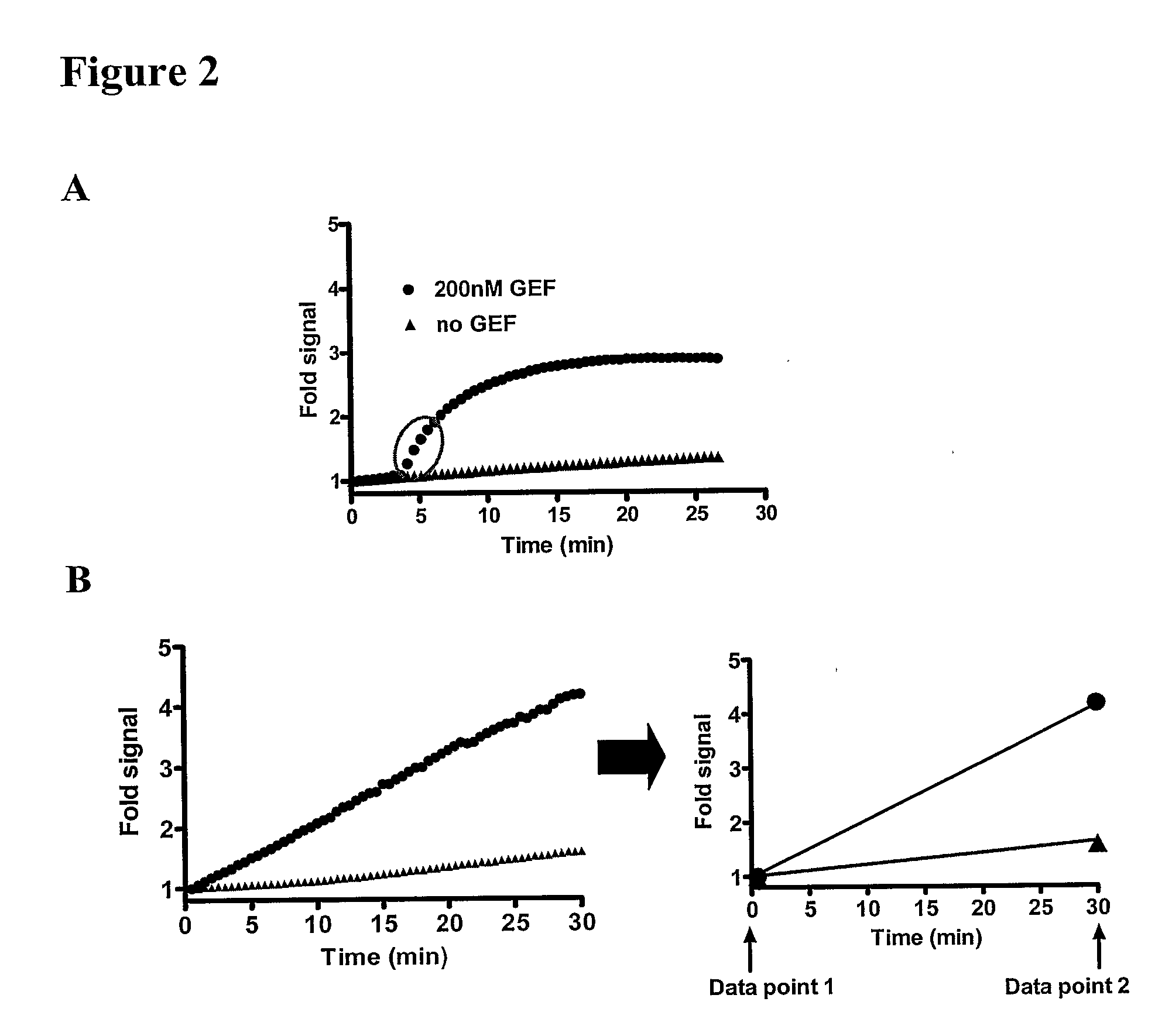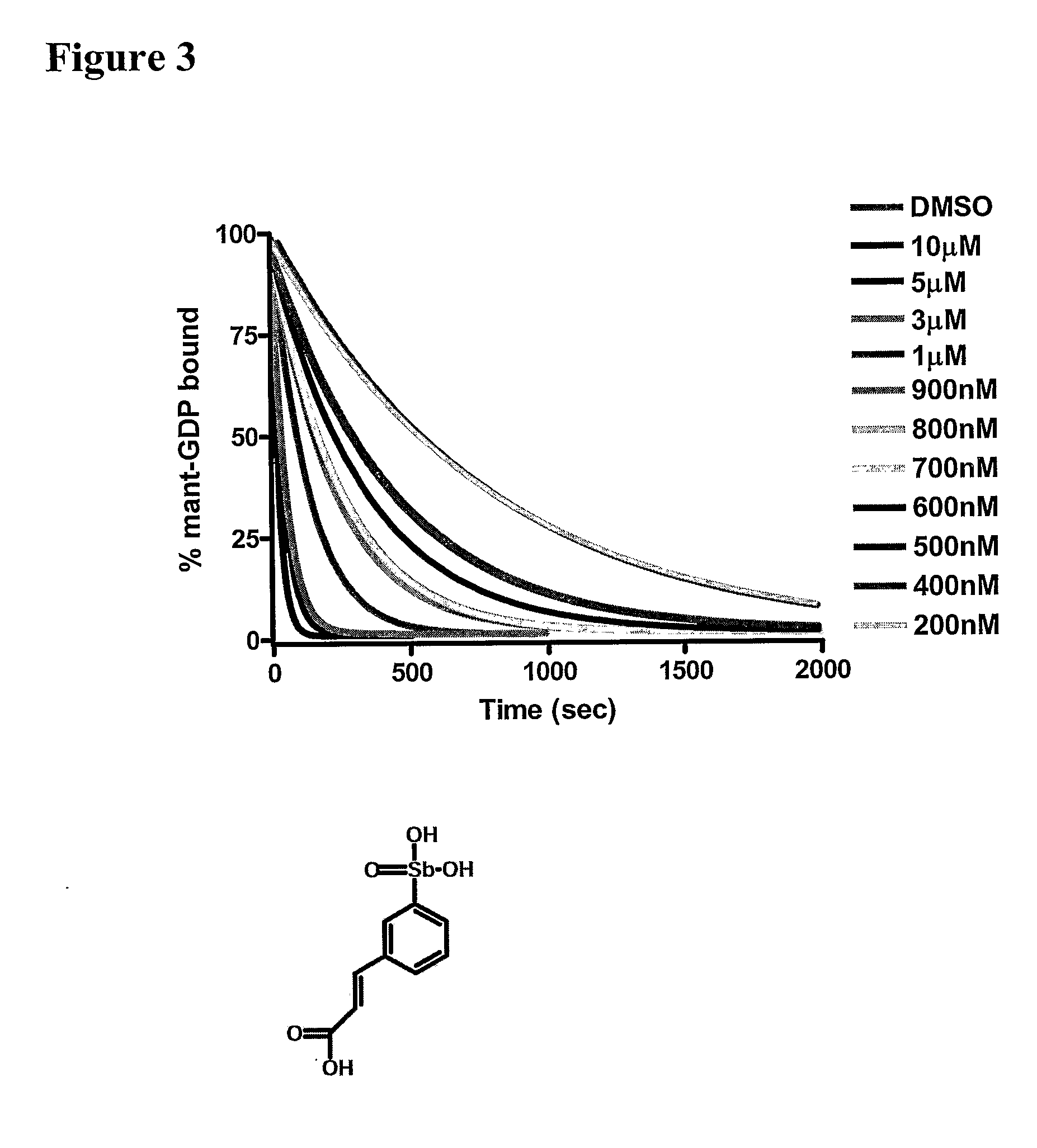Methods For Identifying Chemical Modulators Of Ras Superfamily Gptase Activity
- Summary
- Abstract
- Description
- Claims
- Application Information
AI Technical Summary
Benefits of technology
Problems solved by technology
Method used
Image
Examples
example 1
Fluorescent Nucleotide Exchange Assay
[0055] According to the present invention a fluorescent nucleotide exchange assay is provided that can rapidly detect GTPase activity in real time using fluorescence spectroscopy techniques based on the use of fluorescent guanine nucleotides. This assay can be incorporated into a drug-screening platform that can detect chemical modulation (guanine nucleotide exchange), and thus, chemical modulators, of Ras and Rho GTPases in a high throughput manner.
[0056] In one embodiment of the fluorescent nucleotide exchange assay of this invention, purified components, including buffer, fluorescent nucleotide, GTPase, GEF, and any compound chosen to be tested, are added to a microtiter plate (96-well or 384-well) using liquid handling robotics. All but one reagent are added; typically the GTPase or the GEF is omitted in order to obtain a baseline fluorescence measurement from the plate reader before the reaction is initiated. This baseline can then be subt...
example 2
Two Point Fluorescent Nucleotide Exchange Assay
[0060] While the assay described in Example 1 is kinetic in nature and involves multiple time points in order to properly determine the rate of nucleotide exchange, the assay can also be adapted to a simple 2-point assay, thereby reducing the amount of data collection required and minimizing extensive data analysis. The conversion of a kinetic reaction as in Example 1 to a 2-point assay is shown in FIG. 2. This adaptation to a simplified 2-point assay has involved boosting signal output by using sensitive instrumentation and reducing the amount of GEF added in order to focus on the initial, nearly linear, rate of exchange.
example 3
Refinement of the Fluorescent Nucleotide Exchange Assay
[0061] The assay of the present invention has been extensively refined in order to determine conditions that maximize signal to noise, reduce background, and translate to a simplified assay. While experimental conditions for each high-throughput screen will vary depending upon instrumentation, GEF and GTPase screened, and fluorescent nucleotide chosen, the major components used remain the same. Several different GEF-GTPase pairs have been successfully used in the 96-well real-time kinetic-based assay including the following: Tiam1-Rac1, Dbs-RhoA, Dbs-RhoB, Dbs-RhoC, Dbs-Cdc42, Trio-Rac1, Sos1-HRas, LARG-RhoA, LARG-RhoB, and LARG-RhoC, while the 2-point assay has been applied to Dbs-RhoA. The amount of GEF needed for the reaction is typically dictated by the efficiency of the GEF. For example, Tiam1 is a much less efficient GEF compared to LARG, consequently 500 nM Tiam1 and 100 nM LARG were typically used during an assay. As st...
PUM
 Login to View More
Login to View More Abstract
Description
Claims
Application Information
 Login to View More
Login to View More - R&D
- Intellectual Property
- Life Sciences
- Materials
- Tech Scout
- Unparalleled Data Quality
- Higher Quality Content
- 60% Fewer Hallucinations
Browse by: Latest US Patents, China's latest patents, Technical Efficacy Thesaurus, Application Domain, Technology Topic, Popular Technical Reports.
© 2025 PatSnap. All rights reserved.Legal|Privacy policy|Modern Slavery Act Transparency Statement|Sitemap|About US| Contact US: help@patsnap.com



